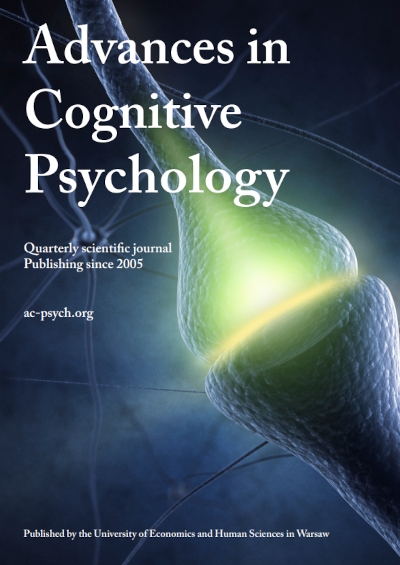Archive of all online content
-
Volume 21 Issue 4
pp. 309-500
(16 November 2025) -
Volume 21 Issue 3
pp. 212-308
(2 September 2025) -
Volume 21 Issue 2
pp. 120-211
(25 May 2025) -
Volume 21 Issue 1
pp. 1-93
(11 March 2025)
-
Volume 20 Issue 4
pp. 237-388
(20 November 2024) -
Volume 20 Issue 3
pp. 158-236
(19 August 2024) -
Volume 20 Issue 2
pp. 80-157
(24 June 2024) -
Volume 20 Issue 1
pp. 1-79
(1 March 2024)
-
Volume 19 Issue 4
pp. 1-105
(27 December 2023) -
Volume 19 Issue 3
pp. 211-333
(25 July 2023) -
Volume 19 Issue 2
pp. 111-200
(30 June 2023) -
Volume 19 Issue 1
pp. 1-110
(31 March 2023)
-
Volume 18 Issue 4
pp. 243-303
(31 December 2022) -
Volume 18 Issue 3
pp. 165-202
(30 September 2022) -
Volume 18 Issue 2
pp. 85-164
(30 June 2022) -
Volume 18 Issue 1
pp. 1-84
(31 March 2022)
-
Volume 17 Issue 4
pp. 250-291
(31 December 2021) -
Volume 17 Issue 3
pp. 193-249
(30 September 2021) -
Volume 17 Issue 2
pp. 99-192
(30 June 2021) -
Volume 17 Issue 1
pp. 1-98
(31 March 2021)
-
Volume 16 Issue 4
pp. 291-369
(31 December 2020) -
Volume 16 Issue 3
pp. 176-290
(30 September 2020) -
Volume 16 Issue 2
pp. 85-175
(30 June 2020) -
Volume 16 Issue 1
pp. 1-84
(31 March 2020)
-
Volume 15 Issue 4
pp. 236-317
(31 December 2019) -
Volume 15 Issue 3
pp. 169-235
(30 September 2019) -
Volume 15 Issue 2
pp. 75-168
(30 June 2019) -
Volume 15 Issue 1
pp. 1-74
(31 March 2019)
-
Volume 14 Issue 4
pp. 150-208
(31 December 2018) -
Volume 14 Issue 3
pp. 62-150
(30 September 2018) -
Volume 14 Issue 2
pp. 38-61
(30 June 2018) -
Volume 14 Issue 1
pp. 1-37
(31 March 2018)
-
Volume 13 Issue 4
pp. 267-322
(31 December 2017) -
Volume 13 Issue 3
pp. 190-266
(30 September 2017) -
Volume 13 Issue 2
pp. 121-189
(30 June 2017) -
Volume 13 Issue 1
pp. 1-120
(31 March 2017)
-
Volume 12 Issue 4 (special issue)
pp. 150-235
(31 December 2016) -
Volume 12 Issue 3
pp. 130-149
(30 September 2016) -
Volume 12 Issue 2
pp. 67-129
(30 June 2016) -
Volume 12 Issue 1
pp. 1-66
(31 March 2016)
-
Volume 11 Issue 4
pp. 118-135
(31 December 2015) -
Volume 11 Issue 3
pp. 64-117
(30 September 2015) -
Volume 11 Issue 2
pp. 31-63
(30 June 2015) -
Volume 11 Issue 1
pp. 1-30
(31 March 2015)
-
Volume 10 Issue 4
pp. 119-155
(31 December 2014) -
Volume 10 Issue 3
pp. 81-118
(30 September 2014) -
Volume 10 Issue 2
pp. 32-80
(30 June 2014) -
Volume 10 Issue 1
pp. 1-31
(27 February 2014)
-
Volume 9 Issue 4
pp. 156-223
(31 December 2013) -
Volume 9 Issue 3
pp. 112-155
(24 October 2013) -
Volume 9 Issue 2
pp. 53-111
(30 June 2013) -
Volume 9 Issue 1
pp. 1-52
(31 March 2013)
-
Volume 8 Issue 4
pp. 267-295
(31 December 2012) -
Volume 8 Issue 3
pp. 210-266
(27 September 2012) -
Volume 8 Issue 2
pp. 70-209
(28 June 2012) -
Volume 8 Issue 1
pp. 1-69
(29 March 2012)
-
Volume 7 Issue 2
pp. 55-156
(31 December 2011) -
Volume 7 Issue 1
pp. 1-54
(31 March 2011)
-
Volume 6 Issue 6
pp. 1-141
(31 December 2010)
-
Volume 5 Issue 5
pp. 1-134
(31 December 2009)
-
Volume 4 Issue 1
pp. 1-14
(31 March 2008)
-
Volume 3 Issue 4
pp. 419-465
(31 December 2007) -
Volume 3 Issue 3
pp. 363-417
(30 September 2007) -
Volume 3 Issue 1
pp. 1-361
(31 March 2007)
-
Volume 2 Issue 4
pp. 239-276
(31 December 2006) -
Volume 2 Issue 2
pp. 99-237
(30 June 2006) -
Volume 2 Issue 1
pp. 1-97
(31 March 2006)
-
Volume 1 Issue 1
pp. 1-16
()
Volume 13 Issue 4 (2017)
Effects of Language Background on Gaze Behavior: A Crosslinguistic Comparison Between Korean and German Speakers
Florian Goller, Donghoon Lee, Ulrich Ansorge, Soonja Choi

Florian Goller, Faculty of Psychology, University of Vienna, Liebiggasse 5, 1010 Vienna, Austria.
E-mail: florian.goller@univie.ac.at
Languages differ in how they categorize spatial relations: While German differentiates between containment (in) and support (auf) with distinct spatial words—(a) den Kuli IN die Kappe stecken (”put pen in cap”); (b) die Kappe AUF den Kuli stecken (”put cap on pen”)—Korean uses a single spatial word (kkita) collapsing (a) and (b) into one semantic category, particularly when the spatial enclosure is tight-fit. Korean uses a different word (i.e., netha) for loose-fits (e.g., apple in bowl). We tested whether these differences influence the attention of the speaker. In a crosslinguistic study, we compared native German speakers with native Korean speakers. Participants rated the similarity of two successive video clips of several scenes where two objects were joined or nested (either in a tight or loose manner). The rating data show that Korean speakers base their rating of similarity more on tight- versus loose-fit, whereas German speakers base their rating more on containment versus support (in vs. auf). Throughout the experiment, we also measured the participants’ eye movements. Korean speakers looked equally long at the moving Figure object and at the stationary Ground object, whereas German speakers were more biased to look at the Ground object. Ad- ditionally, Korean speakers also looked more at the region where the two objects touched than did German speakers. We discuss our data in the light of crosslinguistic semantics and the extent of their influence on spatial cognition and perception.
Keywords: comparative linguistics, eye tracking, cognitive psychology, crosslinguistic comparison, visual attentionThe Effects of Heuristics and Apophenia on Probabilistic Choice
Zack W. Ellerby, Richard J. Tunney

Richard J. Tunney, School of Psychology, University of Nottingham, Nottingham, NG7 2RD, United Kingdom.
E-mail: richard.tunney@nottingham.ac.uk
Given a repeated choice between two or more options with independent and identically distrib- uted reward probabilities, overall pay-offs can be maximized by the exclusive selection of the option with the greatest likelihood of reward. The tendency to match response proportions to reward contingencies is suboptimal. Nevertheless, this behaviour is well documented. A number of explanatory accounts have been proposed for probability matching. These include failed pattern matching, driven by apophenia, and a heuristic-driven response that can be overruled with sufficient deliberation. We report two experiments that were designed to test the relative effects on choice behaviour of both an intuitive versus strategic approach to the task and belief that there was a predictable pattern in the reward sequence, through a combination of both direct experimental manipulation and post-experimental self-report. Mediation analysis was used to model the pathways of effects. Neither of two attempted experimental manipulations of apophenia, nor self-reported levels of apophenia, had a significant effect on proportions of maximizing choices. However, the use of strategy over intuition proved a consistent predictor of maximizing, across all experimental conditions. A parallel analysis was conducted to assess the effect of controlling for individual variance in perceptions of reward contingencies. Although this analysis suggested that apophenia did increase probability matching in the standard task preparation, this effect was found to result from an unforeseen relationship between self-reported apophenia and perceived reward probabilities. A Win-Stay Lose-Shift (WSLS) analysis indicated no reliable relationship between WSLS and either intuition or strategy use.
Keywords: probability matching, apophenia, heuristics, judgement under uncertaintyThe Effects of Similarity on High-Level Visual Working Memory Processing
Li Yang, Lei Mo

Lei Mo, Department of Psychology, South China Normal University, Zhongshan Road West, No. 55, Guangzhou, China.
E-mail: moleipsy@163.com
Similarity has been observed to have opposite effects on visual working memory (VWM) for complex images. How can these discrepant results be reconciled? To answer this question, we used a change-detection paradigm to test visual working memory performance for multiple real-world objects. We found that working memory for moderate similarity items was worse than that for either high or low similarity items. This pattern was unaffected by manipulations of stimulus type (faces vs. scenes), encoding duration (limited vs. self-paced), and presentation format (simultaneous vs. sequential). We also found that the similarity effects differed in strength in different categories (scenes vs. faces). These results suggest that complex real-world objects are represented using a centre-surround inhibition organization. These results support the category-specific cortical resource theory and further suggest that centre-surround inhibition organization may differ by category
Keywords: visual working memory (VWM), similarity, change-detection task, real-world stimuli, centre-surround inhibition formatDifferent Paths to Different Strategies? Unique Associations Among Facets of the Dark Triad, Empathy, and Trait Emotional Intelligence
Edit Szabó, Tamás Bereczkei

Tamás Bereczkei, University of Pécs, Institute of Psychology, Pécs, Ifjúság u. 6, H-7624, Hungary.
E-mail: bereczkei.tamas@pte.hu
Emotional deficits, such as limited empathy, are considered a fundamental aspect of the Dark Triad traits (narcissism, Machiavellianism, and psychopathy). However, the nature and extent of such deficiencies seem to vary among dark personalities. By applying multidimensional measures of empathy, emotional intelligence, and the Dark Triad, we aimed to investigate in more detail how individuals high in various dark traits understand and evaluate emotions. Results indicated that each trait, and, moreover, each facet thereof entailed unique emotional deficiencies. Narcissism was positively associated with trait emotional intelligence, whereas the secondary factor of psychopathy was associated negatively. With respect to empathy, only primary psychopathy was linked to an overall deficit, while a positive relationship was found between Machiavellianism and the perspective-taking facet of cognitive empathy. We argue that the specific emotional limitations of the Dark Triad traits might contribute to the successful deployment of different socially aversive strategies.
Keywords: Dark Triad, emotional intelligence, empathyNonspecific Retroactive Interference in Children and Adults
Jillen Fatania, Tom Mercer

Tom Mercer, Millennium City (MC) Building, Faculty of Education, Health and Wellbeing, University of Wolverhampton, Wolverhampton, WV1 1LY, UK.
E-mail: t.mercer2@wlv.ac.uk
Retroactive interference (RI) is a primary source of forgetting and occurs when new information disrupts or damages an existing memory. Prior research has shown that children are susceptible to RI when the to-be-remembered and interfering information are similar, but it is unclear whether they are also vulnerable to nonspecific RI. This form of interference occurs when a memory is disrupted by an unrelated and dissimilar distractor task, and the present study explored six- and seven-year-olds susceptibility to such nonspecific RI. In two experiments, participants learnt a list of words and completed a free recall test 5 min later. During the interval, participants either remained quiet (the control condition) or completed spot-the-difference puzzles (the interference condition). In Experiment 1, the children were highly susceptible to nonspecific interference, whereas a sample of adults were not affected by the interfering task. However, when a new sample of children were given more time to encode and retrieve the words in Experiment 2, they were able to resist interference. Nonspecific RI can damage children’s memory, but they do have the ability to prevent this form of interference in certain circumstances.
Keywords: retroactive interference, memory development, nonspecific interference, forgetting


